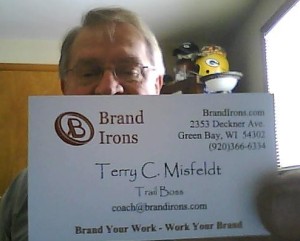According to recent reports by Chartbeat and Google, only 0.1% or less of banner ads are actually clicked on. One-tenth of one percent or less! Couple that with statistics showing that 56.1% of all, repeat all, website ads are not seen and you come to the realization that business owners need to rethink their online marketing strategies.
Roger Yu of USA Today wrote an article recently about how “some notable names in the online publishing business (are) starting to rethink the way they present their content and sell their ads, focusing on the amount of time spent on their content by readers.” The gist of Yu’s article is that online users want relevant and/or compelling content.
Let’s look at the cons of online advertising first.
Banner, pay-per-click, and similar ads are not likely to produce new clients for your business, despite the number of people viewing the sites where you may advertise. When you think about it, which is something we encourage people to do, users don’t want to be sold, so the only way someone is going to click on an ad is if they’re tricked into doing so or are supremely interested in what the potential offer is all about.
The site owner will tout viewers and length of stay on the sites you may advertise on, but when you measure the return on your investment, you are likely to find it’s a waste of money.
What you have to do is weigh the new clients you gain against the cost to acquire them. For example, if you’re spending $600 a month in online advertising and only acquire one new client, the cost of that acquisition is $600. Is a client worth that to your business?
Technology is changing rapidly. What that means is consumer buying habits are also changing rapidly. What you need to increase the likelihood of a sale is the reader’s time and attention. That’s where the value lies for both the consumer and your brand.
Yu’s article reported that in December 2014, “…Google issued a report that said 56% of ads it serves aren’t ‘viewable,’ a term that suggests ads are too far down on the site or that readers aren’t scrolling down far enough.”
On the plus side, having a web presence for your business that is mobile-enabled is essential in this era of smart phones. If a consumer can view your website on their phone, touch and call your business with a couple of thumb or finger moves, you have developed an effective online approach to advertising your business.
If you know where your potential customers are likely to be, such as shopping on Amazon.com or searching with Google, and you can afford to advertise your products there, it may be worth the investment. Try it short-term to see if it generates results.
Brand Your Work – Work Your Brand


